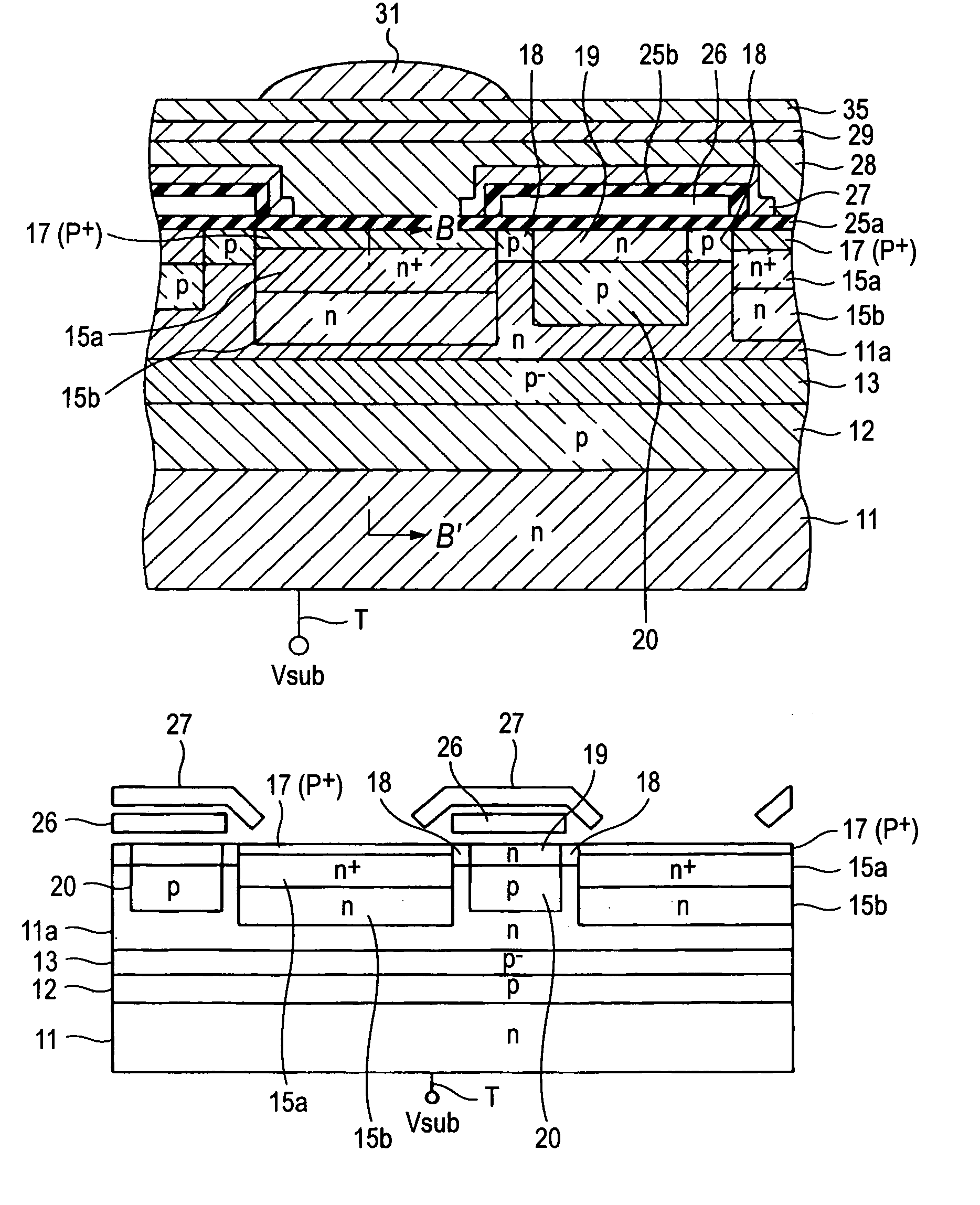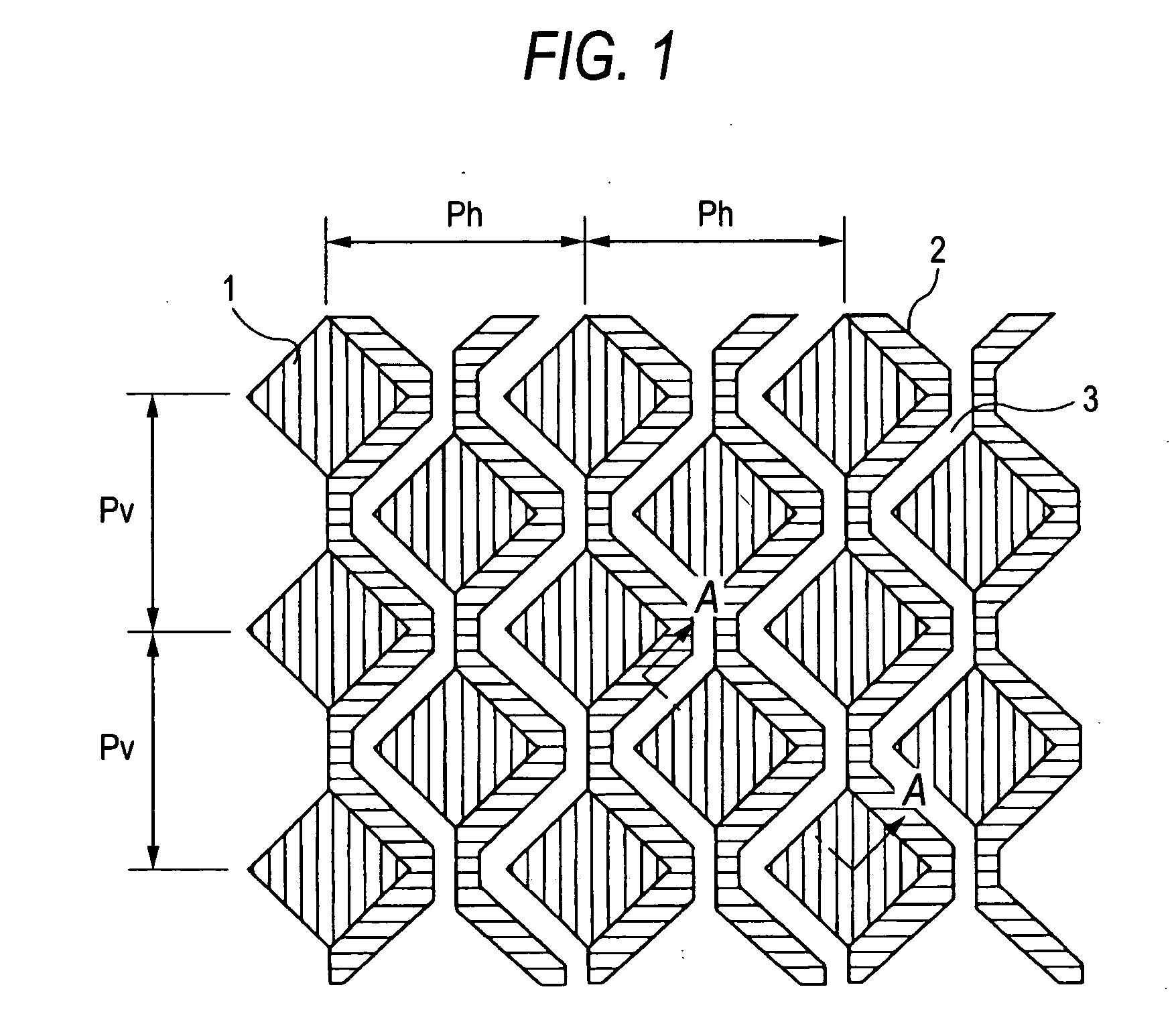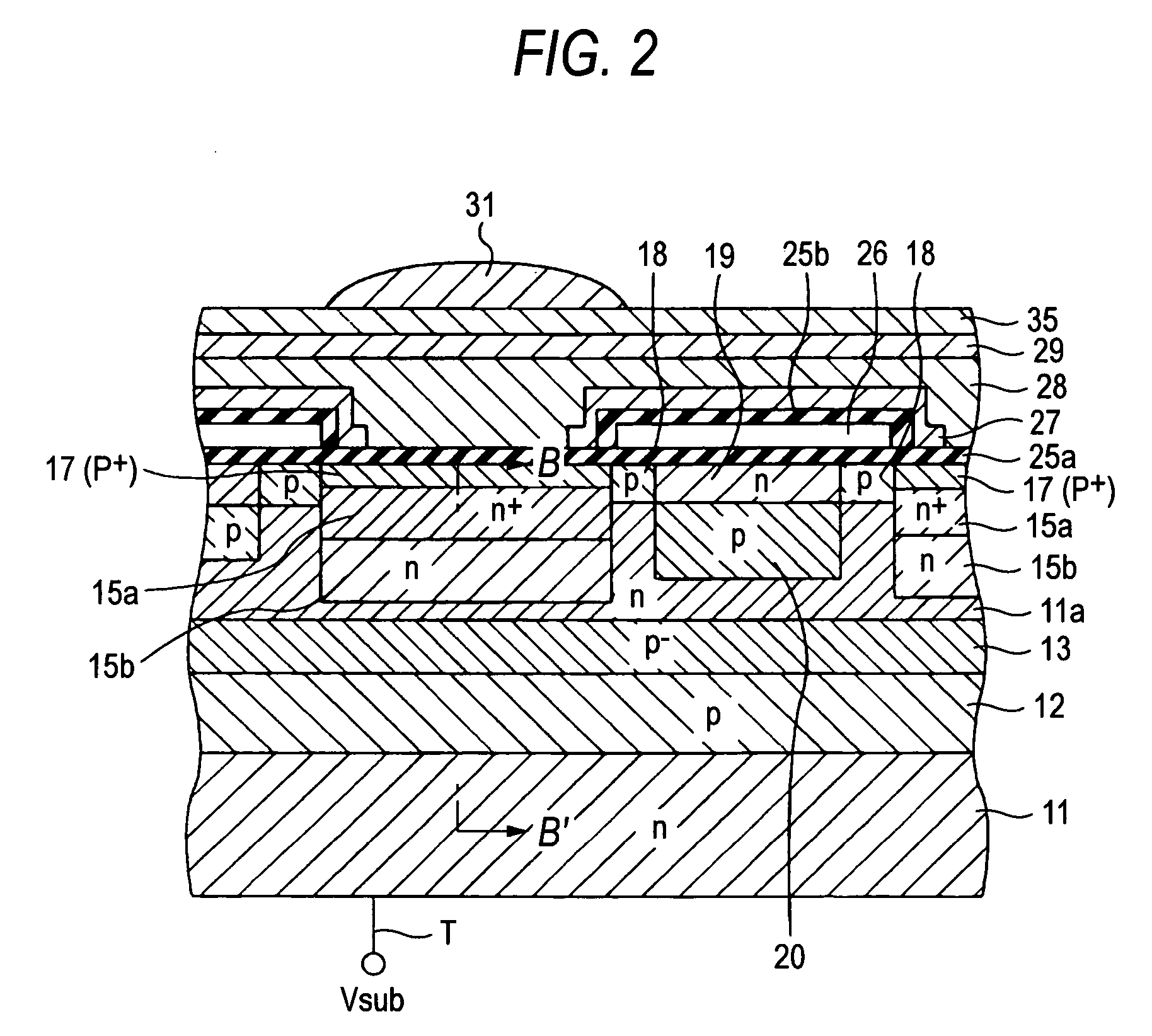Manufacturing method of solid-state imaging device and solid-state imaging device
a solid-state imaging and manufacturing method technology, applied in the direction of semiconductor devices, electrical equipment, basic electric elements, etc., can solve the problems of deteriorating image quality, reducing the area of photodetecting portions, and reducing the amount of charge each pixel can handle, so as to prevent inter-pixel bloom
- Summary
- Abstract
- Description
- Claims
- Application Information
AI Technical Summary
Benefits of technology
Problems solved by technology
Method used
Image
Examples
first embodiment
[0052]FIG. 1 is a schematic plan view showing the structure of a substrate surface in an exemplary solid-state imaging device according to the invention.
[0053] As shown in FIG. 1, a large number of photodiodes (photodetecting portions, pixel portions) 1 are arranged on the surface of a semiconductor substrate in plural columns and plural rows at constant pitches Ph and Pv. FIG. 1 is a simplified view, and in an actual device hundreds to thousands of photodiodes 1 are arranged in each column or row. Each photodiode 1 stores charge of an amount corresponding to a quantity of light received.
[0054] The photodiodes 1 belonging to the even-numbered columns are deviated from those belonging to the odd-numbered columns by about ½of the pitch Pv of the photodiodes 1 of each column, and the photodiodes 1 belonging to the even-numbered rows are deviated from those belonging to the odd-numbered rows by about ½of the pitch Ph of the photodiodes 1 of each row. A staggered pixel arrangement (hon...
second embodiment
[0108] Next, a second embodiment of the invention will be described with reference to FIGS. 10-12.
[0109]FIG. 10 is a sectional view showing the structure of an important part of a solid-state imaging device manufactured by a manufacturing method according to the second embodiment of the invention (an epitaxial layer is laid on an n-type epitaxial substrate and plural inter-pixel isolation regions are formed in multiple layers).
[0110]FIG. 10 corresponds to FIG. 3, and regions etc. having corresponding ones in FIG. 3 are given the same reference symbols as the latter. The structure of the solid-state imaging device shown in FIG. 10 is characterized in that an epitaxial layer 40 is laid on an n-type epitaxial substrate (i.e., the portion under a broken line in FIG. 10 and a margin in the depth direction is thereby increased (to secure sufficient sensitivity to long-wavelength light), and that plural impurity regions (20, 30, and 32) arranged in multiple layers serve as inter-pixel is...
PUM
 Login to View More
Login to View More Abstract
Description
Claims
Application Information
 Login to View More
Login to View More - R&D
- Intellectual Property
- Life Sciences
- Materials
- Tech Scout
- Unparalleled Data Quality
- Higher Quality Content
- 60% Fewer Hallucinations
Browse by: Latest US Patents, China's latest patents, Technical Efficacy Thesaurus, Application Domain, Technology Topic, Popular Technical Reports.
© 2025 PatSnap. All rights reserved.Legal|Privacy policy|Modern Slavery Act Transparency Statement|Sitemap|About US| Contact US: help@patsnap.com



